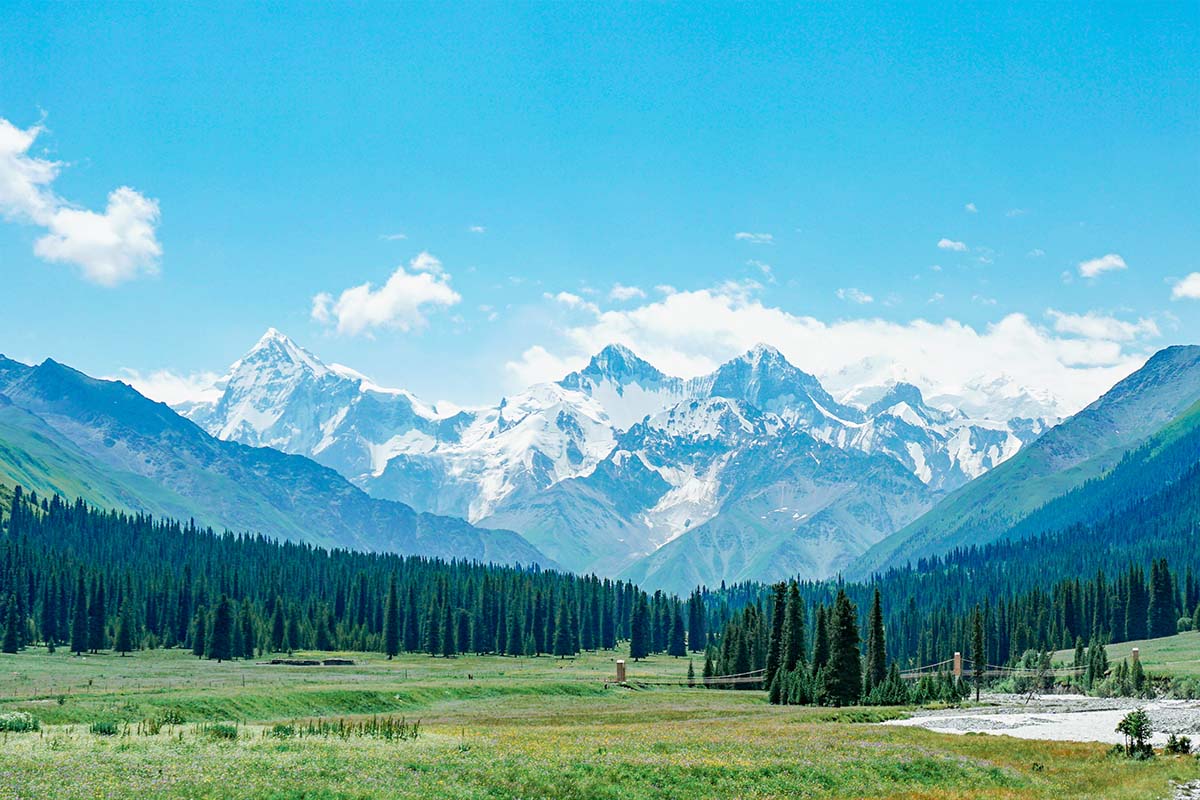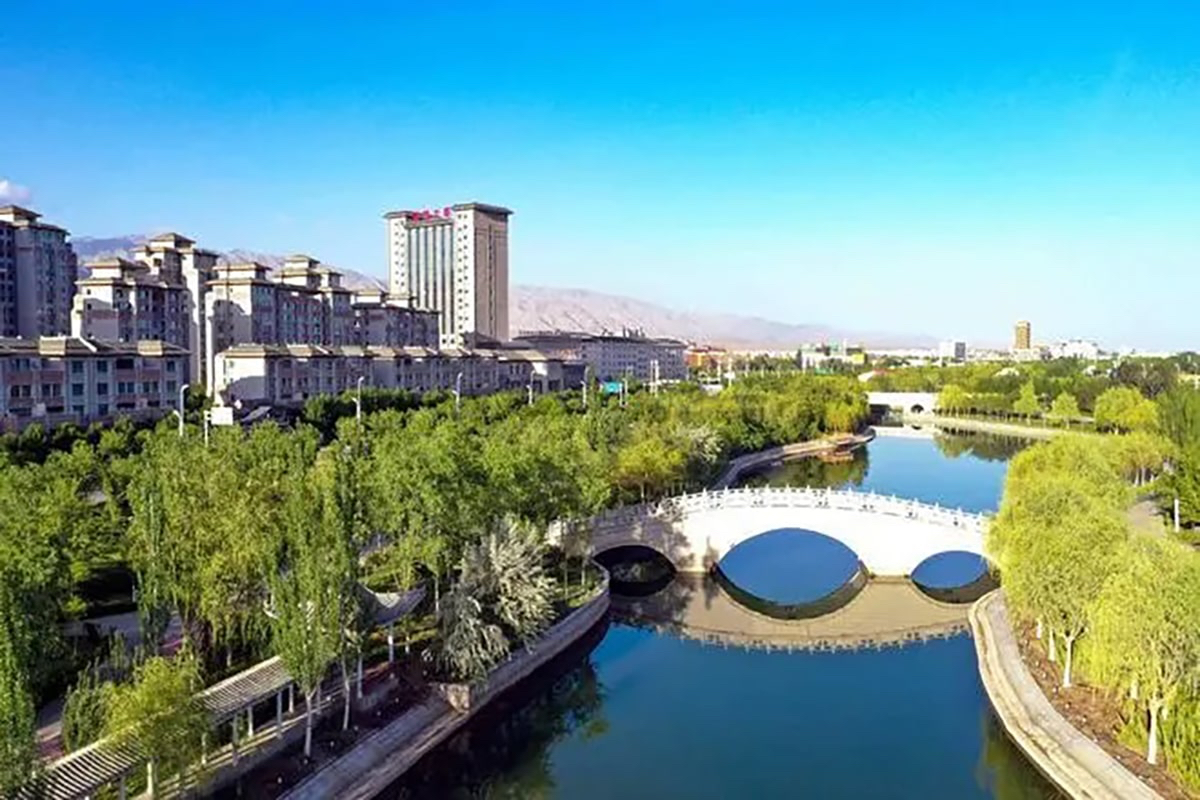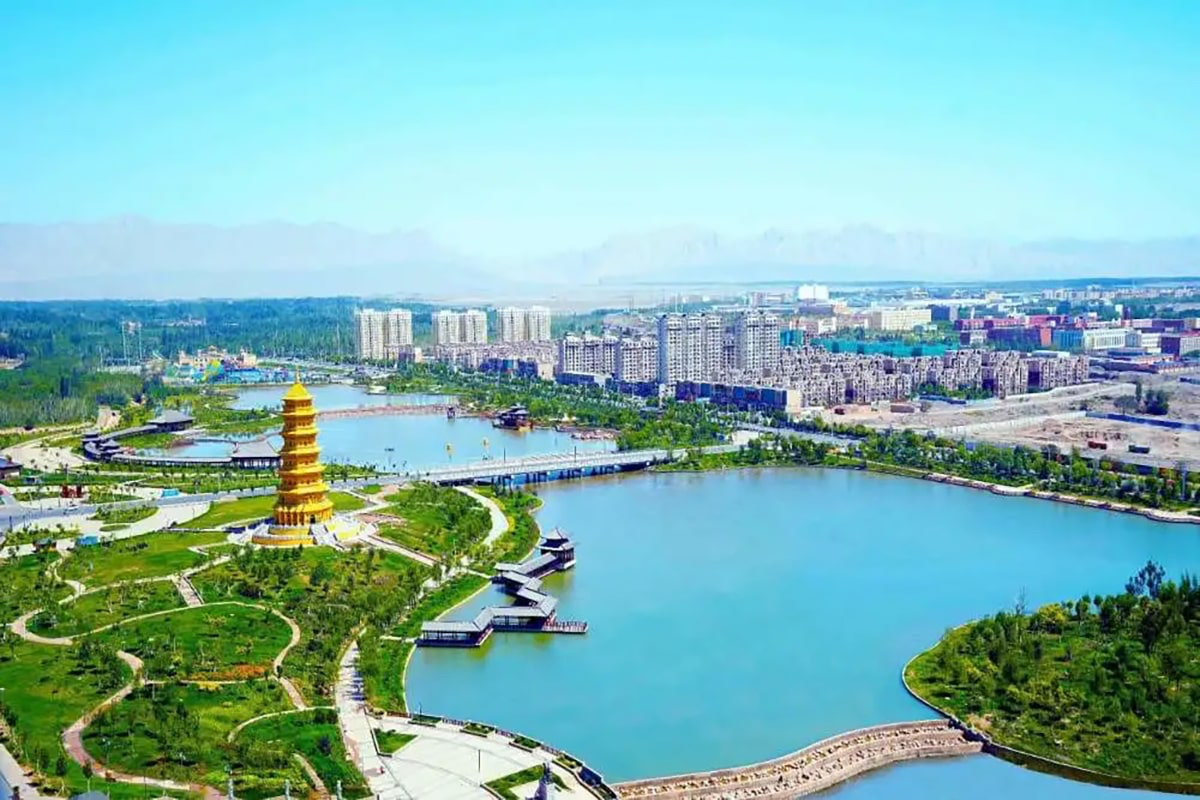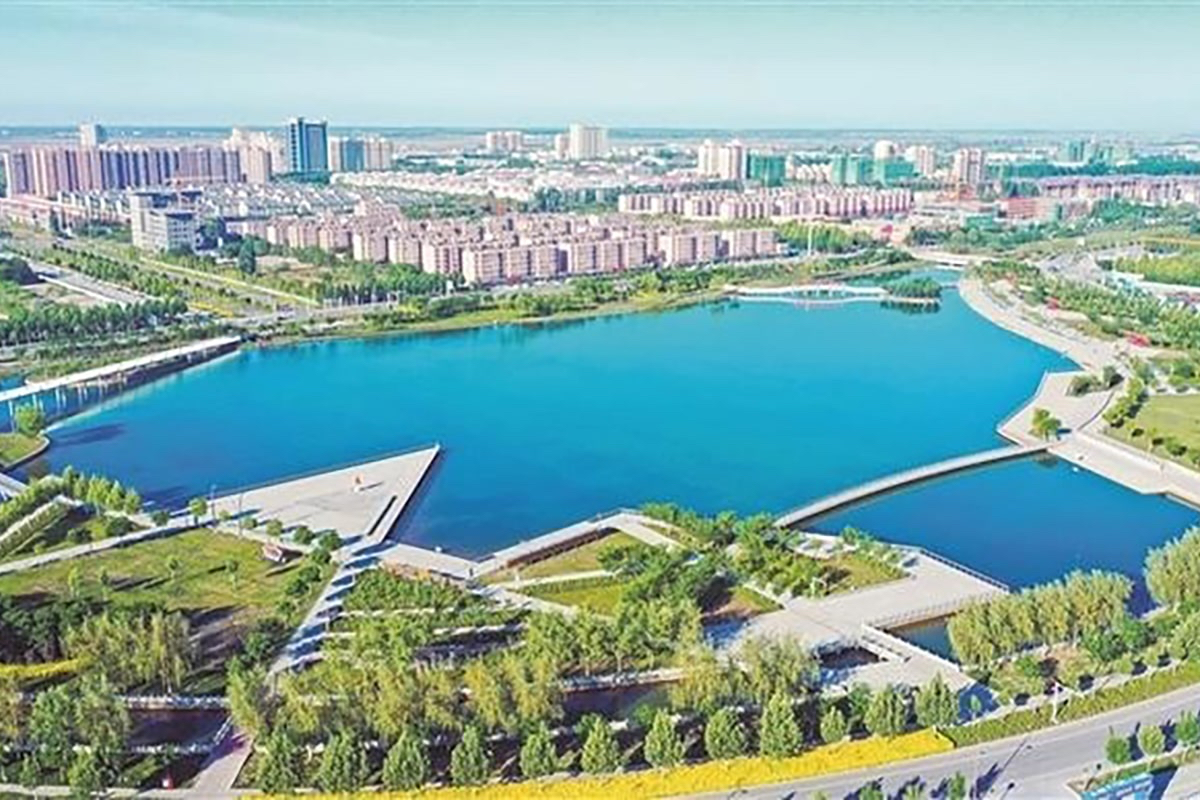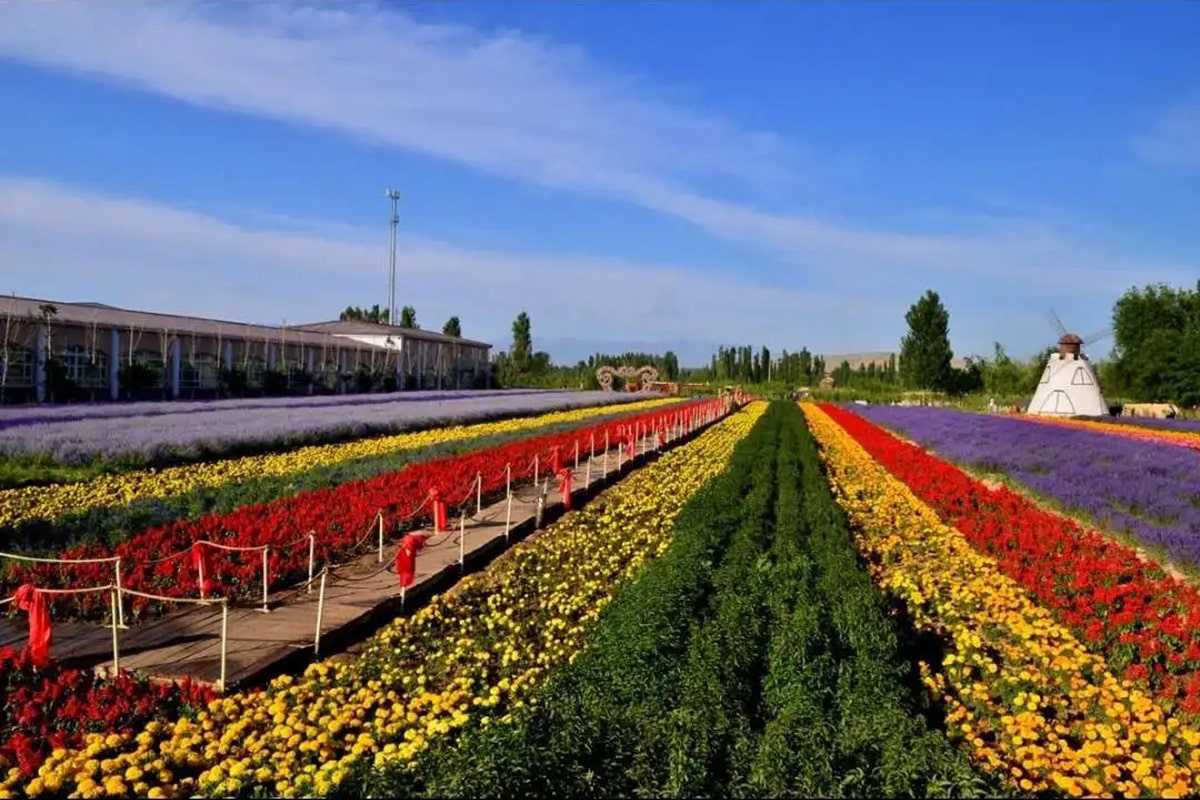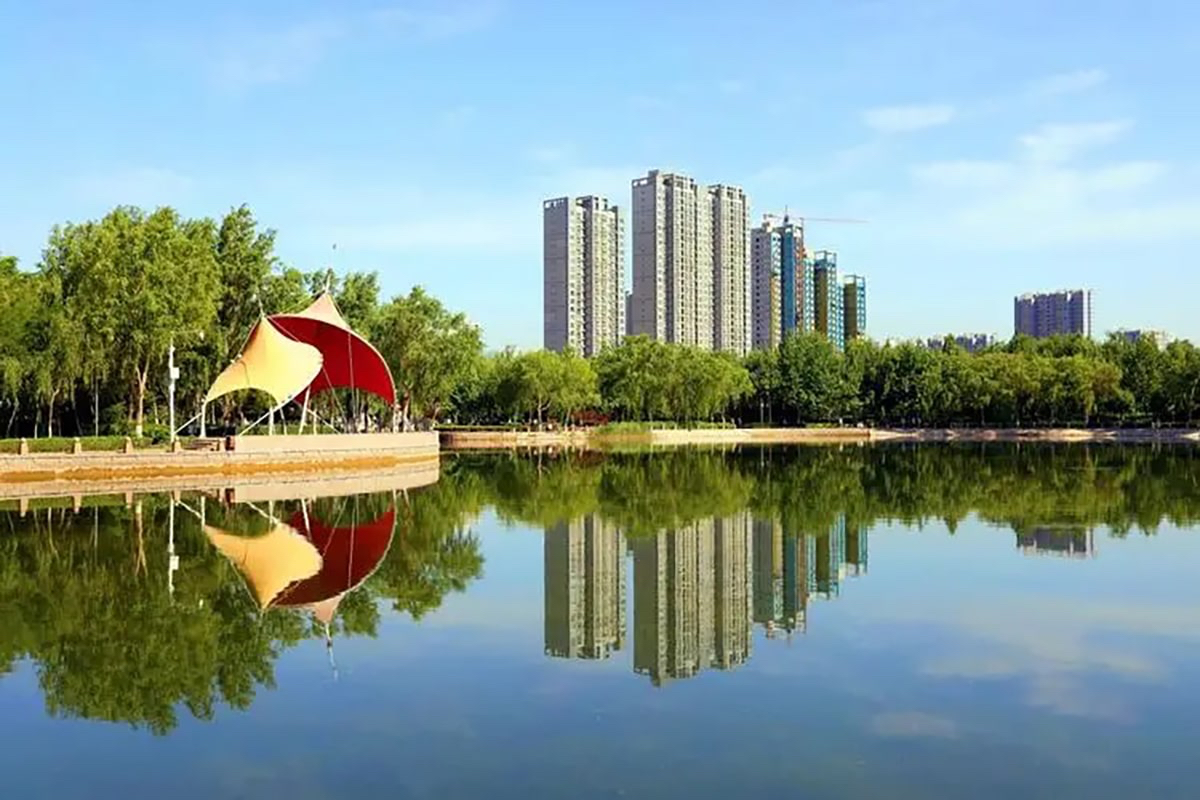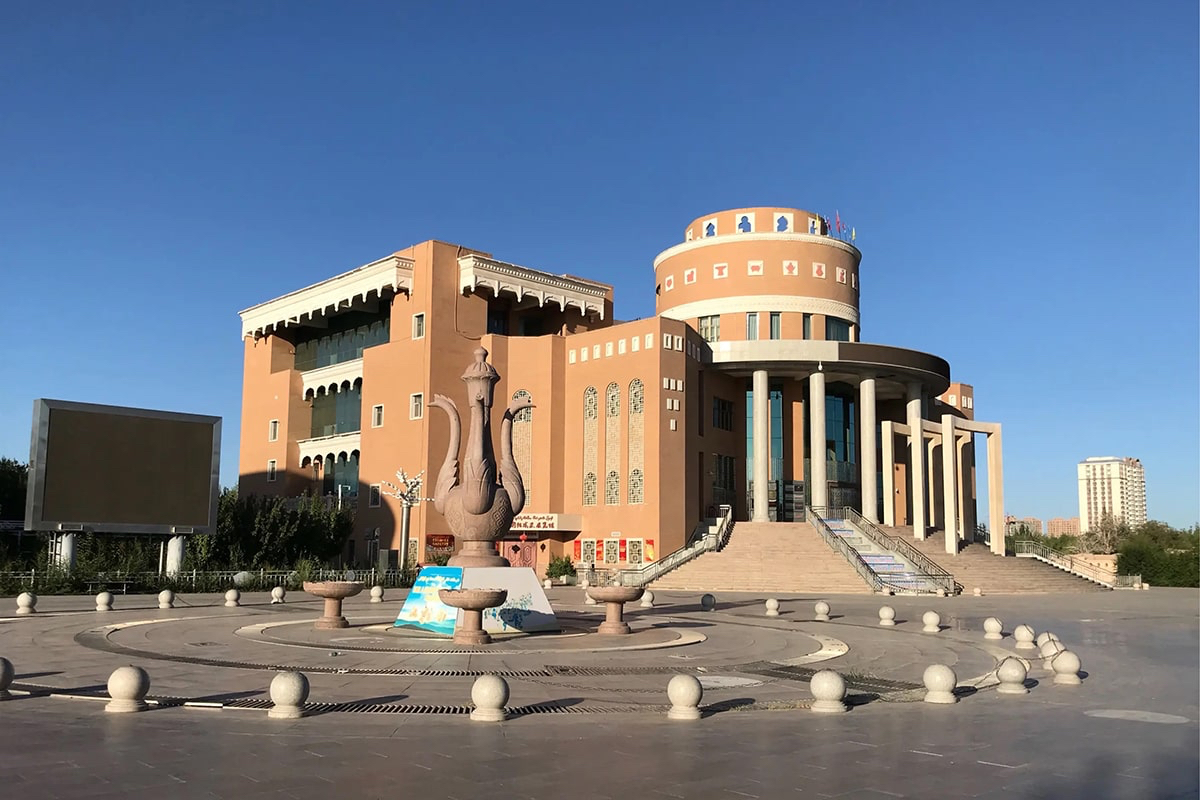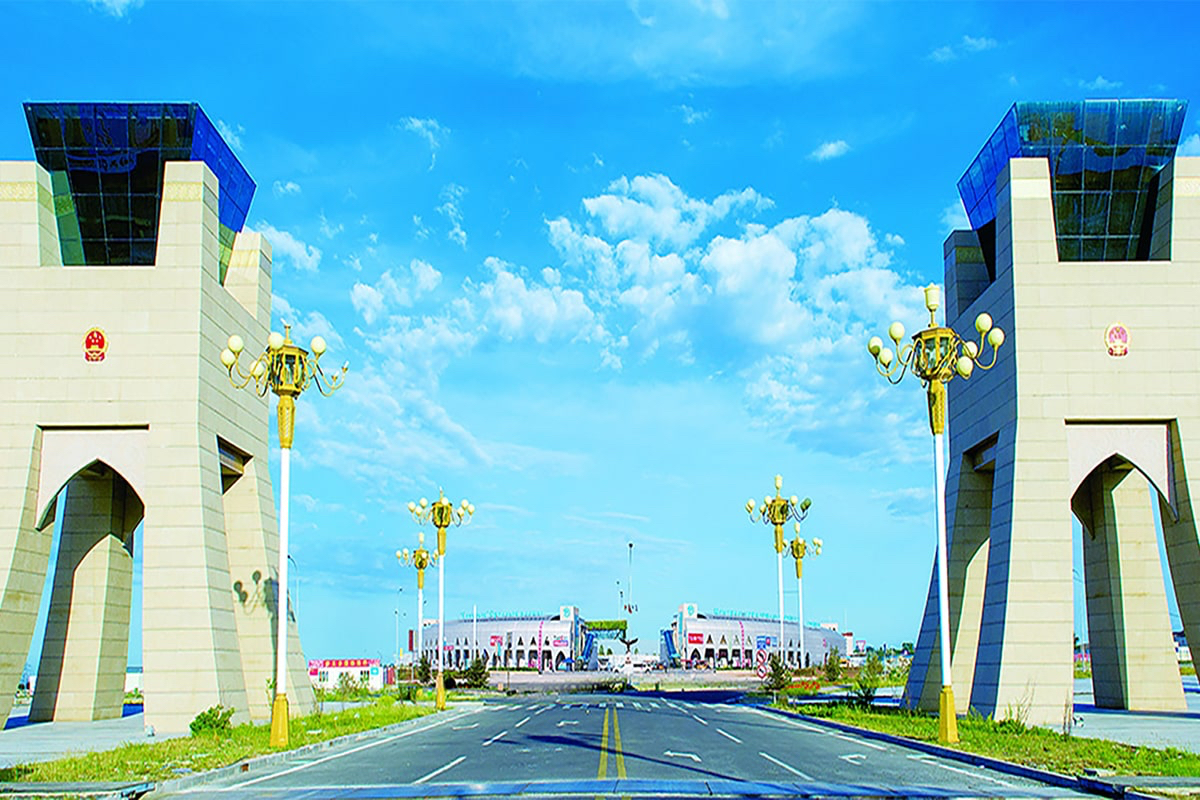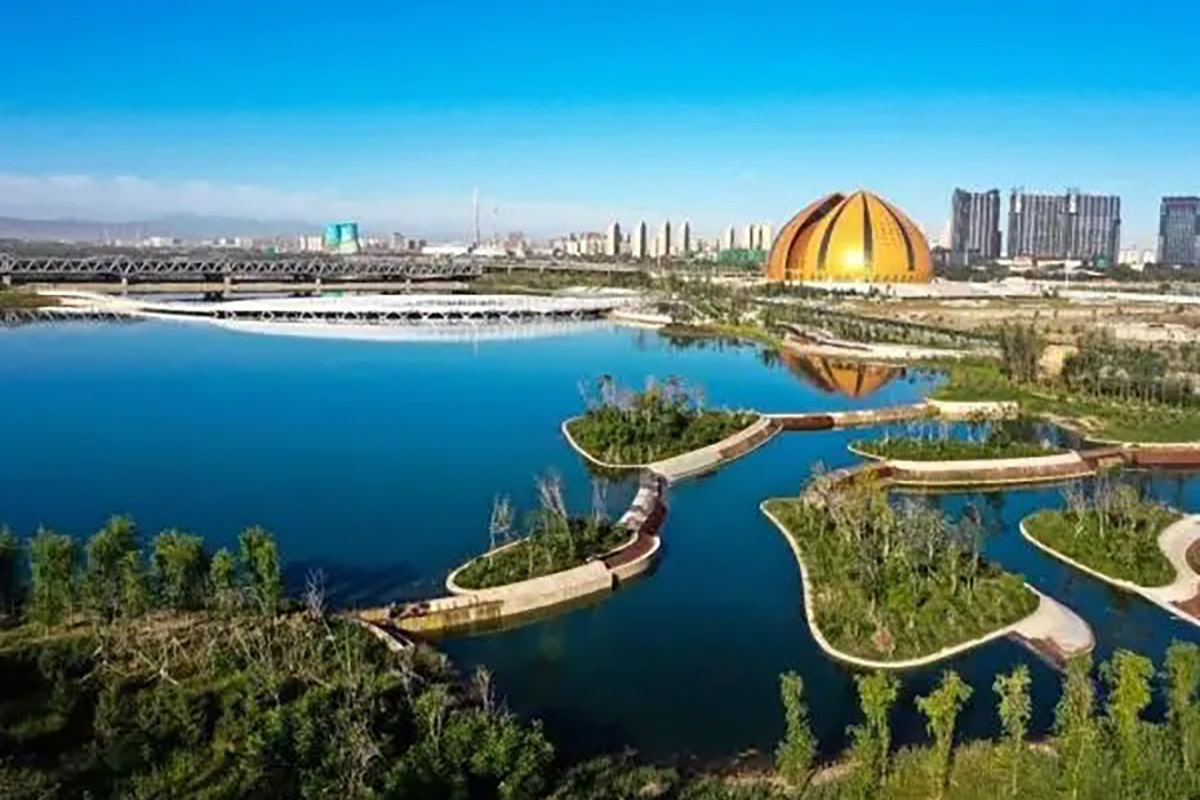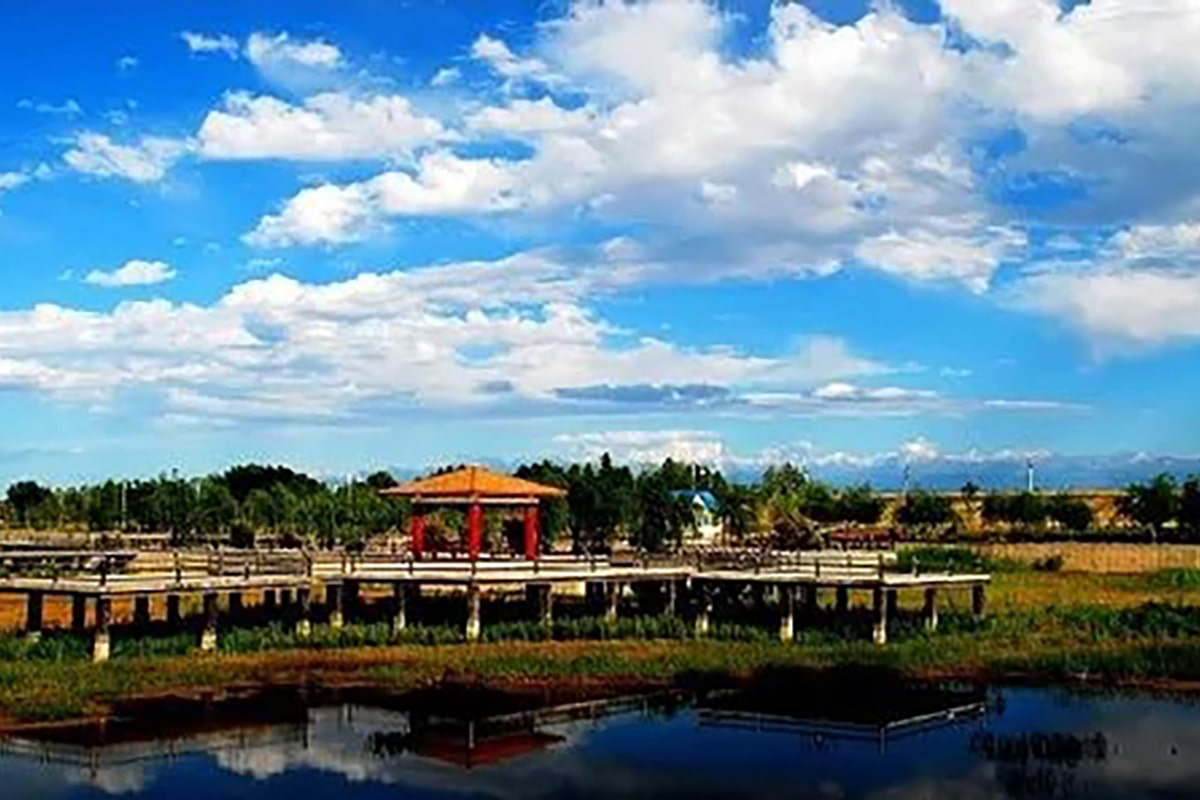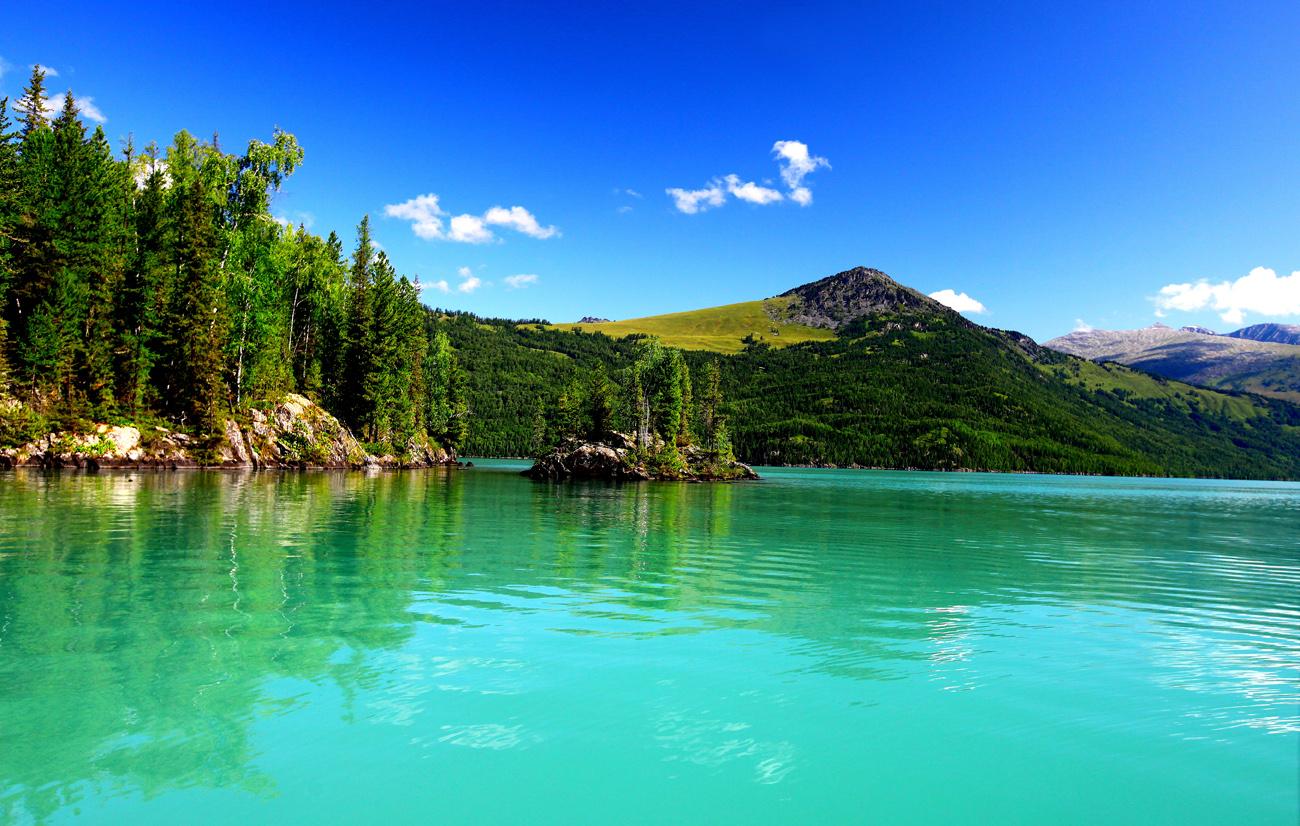A brief introduction of Xinjiang Ili Kazakh Autonomous Prefecture
Ili is an autonomous prefecture for Kazak people in Xinjiang Uyghur Autonomous Region, China, one of 5 autonomous prefectures in Xinjiang. Yining City is its capital. It is bordered by Mongolia, Russian Federation and Republic of Kazakhstan on the northeast to southwest, with a boundary line of 2,019 kilometers. Including Khorgas, Bakhty and Jeminay, there are 9 ports of entry at the national level. With the unique location advantage, Ili has been an important commercial hub and international channel of opening up to the west.
Main cities of Ili
Yining
Yining is situated in the far northwest of Xinjiang in the center of the Ili River Plain. Formerly known as Ningyuan, the city was first built in 1762. It was one of nine fortified towns built along the Ili River during the Ming and Qing dynasties.
Today, the city is the capital of Ili Kazakh Autonomous Prefecture.
Yining is a major industrial city in the Ili region. The historical influence of Russian architecture has left the city with some very unusual and impressive landmarks. Russian invaders marched into Yining in the 1870s and stayed for several decades. They left behind many buildings imbued with a Russian style and design.Popular attractions include the offices of a Qing dynasty military official, Shaanxi Mosque, Baidula Mosque, Huolong Cave, the Ili Grasslands and the Ili River.
Tekes County
Tekes County is a county within the Xinjiang Uyghur Autonomous Region and is under the administration of the Ili Kazakh Autonomous Prefecture.
The county center is known for being a planned community with a shape of a ba gua. The street layout is like a magical labyrinth.
At the same time, Bagua city has rich folk customs, As one of the well-known tour destinations along the silk road, where you can not only enjoy the beautiful natural landscape but also experience the wisdom of The Book of Changes.Tekes County is also the flourishing place of the Wusun culture. Tekes has grassland stone man, Sairen ancient tomb, ancient cliff painting, and rock wind tunnels.Kalajun grassland is situated in the southeastern side of Tekes County, it is one of the most famous grasslands in Xinjiang. The grassland is backed by snow mountains, here you can see the forests, flowers and other spectacular landscapes.
Huocheng County
Huocheng is a major gateway of the Ili Valley and a key passage to Central and West Asia. State roads 312 and 218 pass through the county. Horgos Port, the largest land port in Northwest China, is also located in the county. Huocheng has become a hub for highway and railway transport. Huocheng has 23 rivers in total with plentiful groundwater. It is renowned for its large number of wild fruit trees and ample Chinese herbal medicine resources.
Huocheng is also a key attraction for tourists around the country with a great number of scenic spots, such as Sayram Lake, Guozigou and Fushou Temple. Rolling green pastures, clear creeks and colorful wildflowers contribute to Huocheng’s distinctive tourism.
Huocheng has had a strong trade economy since ancient times. Horgos Port in the county connects with countries in Central Asia and West Europe, providing convenience in domestic and foreign trade. The county is also the biggest trading center for agricultural products and the biggest logistics center in Xinjiang.
Zhaosu County
Zhaosu County as the official romanized name, also transliterated from Todo Mongolian as Mongolküre County , is a county situated within the Xinjiang Uyghur Autonomous Region and is under the administration of the Ili Kazakh Autonomous Prefecture, bordering Kazakhstan's Almaty Region to the west.
Zhaosu Prairie refers to the grassland area of Zhaosu County, Yili Prefecture, Xinjiang, where the mountains, rivers, and grassland are magnificent. It has always been one of the more famous prairies in China, and is also an important scenic spot for tourists to visit in Yili. Zhaosu prairie is very rich and luxuriant in water and grass, backed by snow mountains.
Around 67,000 hectares of rapeseed flowers are cultivated annually in Zhaosu County ,with a flowering period of about 30 days in July, a splendid view of golden Rapeseed flowers covered the vast fields.
Other than beautiful scenery, there are also cultural relics such as ancient stone men sculptures, the Gedeng Tablet, the Shengyou Temple, etc. It is also the main raising place for the famous Yili Horse. Every year, there is the Tianma Festival, among others, to enrich the experience of visiting.
Ethnic Minority of Ili
Ili is home to nearly 20 ethnic groups, and each has its own distinctive lifestyle and folk customs.
With Yining as its capital city, Ili Kazakh Autonomous Prefecture is administratively divided into three parts -- Altay Prefecture and Tacheng Prefecture, together with a direct-administered region that includes Yining City, 2 other county-level cities, 7 counties, and 1 autonomous county.
Ili has a population of 4,408,000 including 47 minority groups, 25.5% of which are Kazakh, 45.2% from Han nationality, 15.9% Uighurs and the rest are from Hui, Mongol and Xibe nationalities.
One good place to experience the unique features of Xinjiang’s diverse ethnic groups are the bazaars in the city of Yining, the political and economic center of the Ili region. The bazaar is where local people trade all kinds of goods. Here you can meet people from various ethnic groups and find all kinds of local handicrafts and delicacies, as well as many exotic articles from countries surrounding Xinjiang.
Top things to do in Ili
Ili plays an essential part in today's Xinjiang as well as in ancient times when it serves as key fort along Silk Road. Thousands upon thousands li of grasslands,the lush forests, green mountains and crystal clear lakes make it an ideal place for tourists to wander and appreciate the beauty of nature. Tourist attractions like Kuntun Grand Canyon, Sayram Lake and the Ili Grassland have caught the eye of thousands of tourists both from in China and around the world.
● The Ili area is best known for the Ili River, about 16 kilometers south of Yining city. originating in the Tianshan mountains, the river winds its way westward through the Ili valley, and finally spills into Lake Balkhash in Kazakhstan. The river banks present a magnificent vantage point for viewing the snow-covered mountains and verdant forests. The enormous Ili Bridge is considered the best location for watching and filming the setting sun, and remains a favorite with many photographers.
● Ili is known as “a place with south China scenery.” Its grasslands contain various kinds of meadows from alpine meadows, upland meadows, to mountainous grasslands, desert plains, and river valley meadows. But not only are there well-known grasslands like the Nalati Grassland, Karajun Grassland, and Ku’erdening Grassland among others, there are many other remote and primitive grasslands like Kongdunasu, which are equally beautiful.
● The months between June and September each year are always the most beautiful season for all the grasslands in Ili. As temperatures rise, snow gives way to lush carpets of new grass that soon fertilize oceans of flowers. The layer of the green grass stretches up along the beautiful winding mountains and deep into the spruce forests. It also helps breed a variety of wild flowers and provides feed for cattle, sheep, and horses that return every year to the grasslands to graze at their leisure. Herdsmen gallop their horses up and down the grasslands.
● In addition to these, vast expanses of rape flowers are in full bloom in Zhaosu County from mid to late July to August – you cannot miss seeing it. Tens of thousands of acres of rape flowers are miraculously transformed into a golden sea, spreading all the way to the foot of the Tianshan Mountains. Zhaosu is also the hometown of the Ili heavenly steed. Here, visitors can experience the thrill of seeing water spraying up from a herd of horses running through the river as well as the spectacular view of horses galloping down the hillside.
Ili Climate
Ili Autonomous Prefecture belongs to continental climate zone. Weather featured as a mild and humid with short summer and long winter. There is a weather difference between the areas. There is a huge difference between the weather during the day and night.
Ili is famed as "Jiangnan beyond the Great Wall", the "Flower City" and the "Wet Island in Central Asia". It is a vast territory with an abundant of resources. It is covered by 30 million mu of green grass making it a natural meadow.
The prefecture enjoys a cool, temperate, semi-arid, continental climate. Owing to the vast expanse of land, there are also microclimate features in different regions. Generally, summers here are short and the winters, long. The temperature varies greatly between day and night. The temperature in spring rises rapidly but unstably, while the autumn temperatures drop rapidly. Summer and autumn are the best time. The pastures are verdant. Melons and fruits are ripe.
- HOTEST
- RECOMMEND
